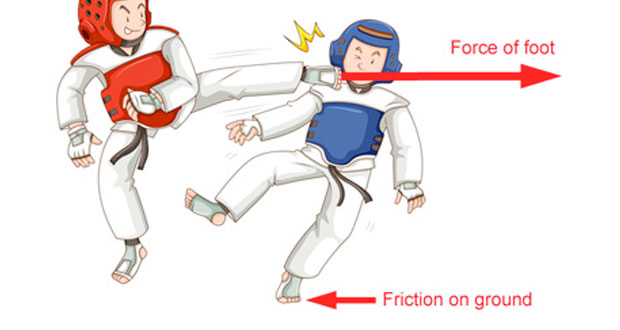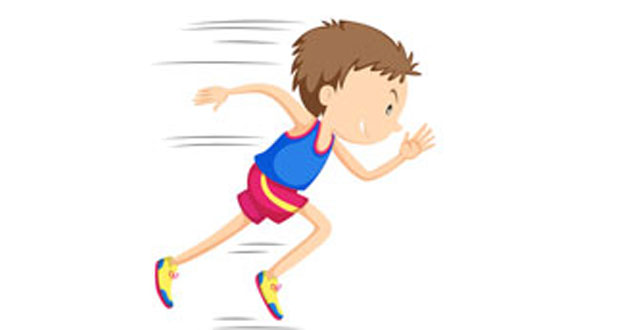A force is a push or a pull that alters the state of motion of a body and is measured in Newton’s (N). Here we cover balanced and unbalanced forces, friction, air resistance, impulse, force-time graphs, and free-body diagrams.
Free Body Diagrams
Free body diagrams are used to show which forces are acting on a body at a particular instant in time. Arrows indicate the position, direction, and size of the force acting. The most likely forces acting on an athlete are friction, air resistance, weight, and reaction forces.
Read more on Free body diagrams.
Friction and Air Resistance
Frictional forces act against the movement of one surface over another, such as tennis shoes on a grass court. Friction is the force that prevents the player from slipping and sliding. When air passes over a surface a frictional force called air resistance is produced, this is particularly important at high speed.
Read more on Friction & air resistance.
Impulse
What is Impulse? An Impulse is simply a measure of the force applied for a specific time. Impulse = force x time and has units Ns (Newton seconds). It is an important concept in sports because many techniques, particularly throwing activities, require the performer to apply as large a force as possible for as long as possible.
Read more on Impulse.
Balanced and unbalanced forces
A force is a push or a pull that alters the state of motion of a body and is measured in Newton’s (N). As explained in Newton’s first law of motion a force is required to make a stationary body move, change speed, direction or stop.
Read more on balanced forces.




